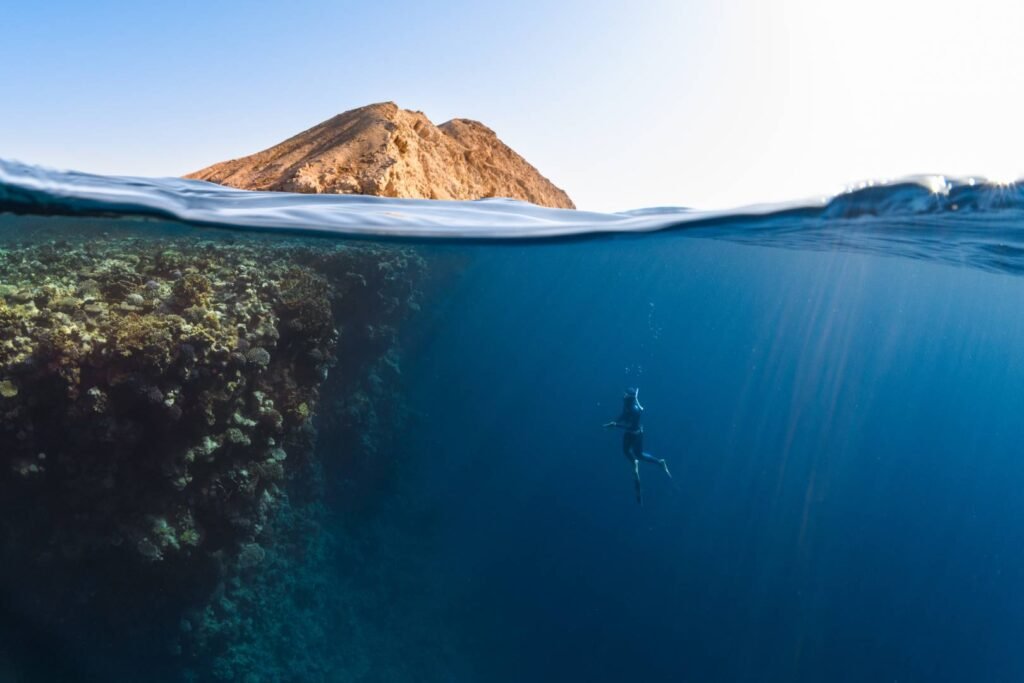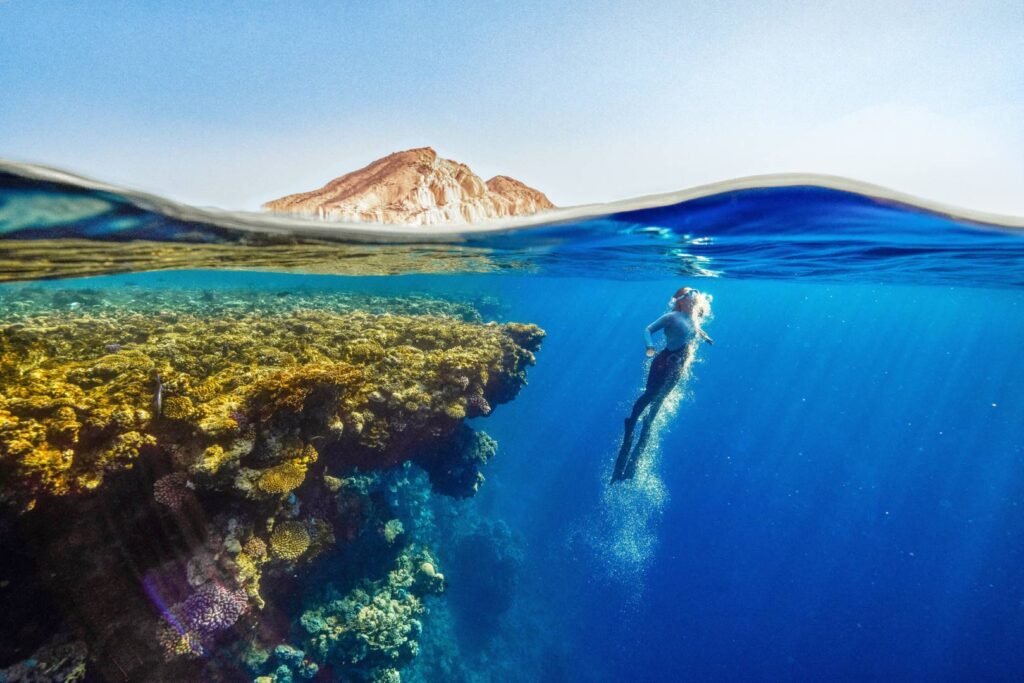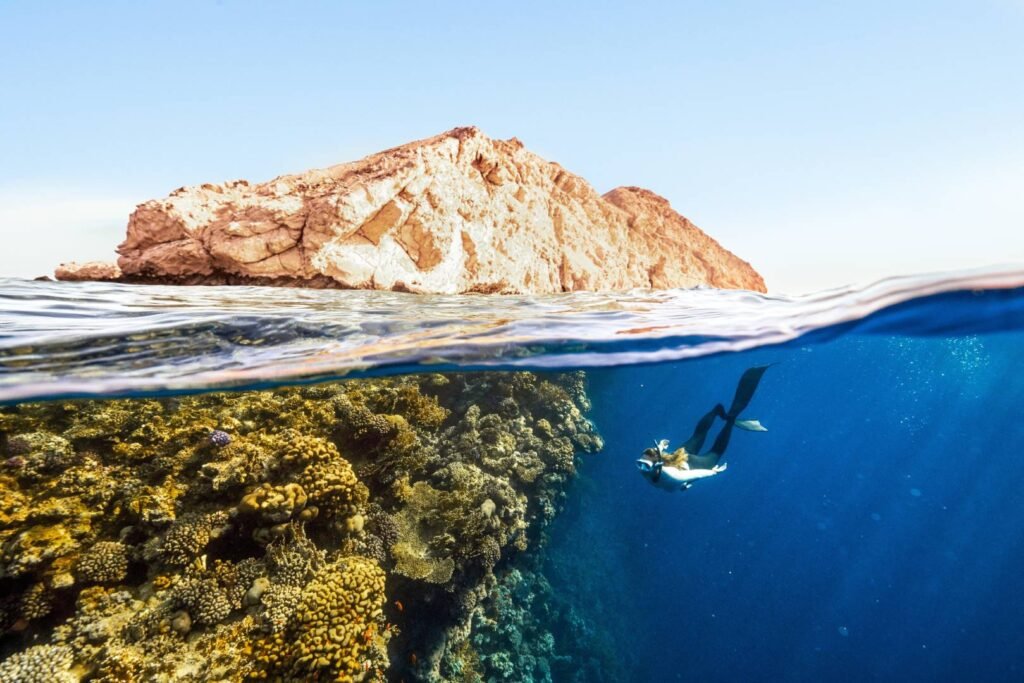Have you ever heard of megalohydrothalassophobia? It may sound like a mouthful, but it is a specific phobia that is related to thalassophobia, the fear of large, deep bodies of water. Megalohydrothalassophobia is a fear of large things in the water, such as large sea creatures, shipwrecks, or underwater structures.
In this blog post, we will explore megalohydrothalassophobia in more detail, including its symptoms, causes, and treatment options. I am assuming you know about Thalassophobia – Fear of the ocean or other large, Deep water Bodies
But first things first, How do you pronounce megalohydrothalassophobia? The pronunciation of megalohydrothalassophobia is: meh-guh-loh-hy-droh-thuh-luh-soh-foh-bee-uh.

Megalohydrothalassophobia is a term that combines several Greek roots to describe a specific phobia. Let’s break down the word:
- Megalo: This prefix is derived from the Greek word “megas,” which means “great” or “large.”
- Hydro: This prefix is derived from the Greek word “hydor,” which means “water.”
- Thalasso: This prefix is derived from the Greek word “thalassa,” which means “sea” or “ocean.”
- Phobia: This suffix is derived from the Greek word “phobos,” which means “fear” or “phobia.”
Combining these roots, Megalohydrothalassophobia can be understood as the fear or phobia of large bodies of water, such as oceans, seas, or deep bodies of water. People with megalohydrothalassophobia may experience intense anxiety or panic when confronted with the vastness, depth, or expansiveness of bodies of water.

Symptoms of Megalohydrothalassophobia

Symptoms of Megalohydrothalassophobia Like other specific phobias, megalohydrothalassophobia can cause a range of physical and emotional symptoms, including:
- Intense fear or anxiety when thinking about or being exposed to large things in the water
- Avoidance of water-related activities or locations, such as the beach or aquariums
- Panic attacks, which can include rapid heartbeat, sweating, and difficulty breathing
- Hyperventilation or shortness of breath
- Trembling or shaking
- Nausea or stomach upset
- Dizziness or lightheadedness
Also Read Fear of Shipwrecks – Submechanophobia & How to Overcome it
These symptoms can be distressing and may interfere with daily life.
Causes of Megalohydrothalassophobia

Causes of Megalohydrothalassophobia Like other phobias, megalohydrothalassophobia can have a variety of causes, including:
- Traumatic experiences: A person may develop megalohydrothalassophobia after experiencing a traumatic event, such as a near-drowning incident or witnessing a shark attack.
- Learned behavior: Some people may develop the fear after seeing others react fearfully to large things in the water or after hearing negative messages about water during childhood.
- Genetics: There may be a genetic component to phobias, including megalohydrothalassophobia.
- Anxiety disorders: Megalohydrothalassophobia may be related to other anxiety disorders, such as generalized anxiety disorder or panic disorder.
Treatment for Megalohydrothalassophobia

Treatment for Megalohydrothalassophobia There are several treatment options for megalohydrothalassophobia, including:
- Exposure therapy: This involves gradually exposing the person to the feared object or situation in a controlled and safe manner. Over time, the person learns to tolerate and eventually overcome the fear.
- Cognitive-behavioral therapy (CBT) : This involves identifying and changing negative thought patterns and behaviors related to the fear. Cognitive-behavioral therapy (CBT) is a type of therapy that helps people change the way they think about and react to their fears.
- Medication: Antidepressants and anti-anxiety medications may be prescribed to help manage symptoms.
- Self-help strategies: These may include relaxation techniques, such as deep breathing or meditation, and positive self-talk.
It’s important to note that treatment for megalohydrothalassophobia may take time and patience. With the help of a mental health professional, many people are able to overcome their fear and lead fulfilling lives.
What is Megalohydrothalassophobia test

“Megalohydrothalassophobia test” is not a standardized or recognized diagnostic tool for megalohydrothalassophobia or any other phobia. However, mental health professionals may use diagnostic tools such as questionnaires, interviews, and observation to assess the severity and impact of the fear.
These assessments can help mental health professionals properly diagnose and develop an effective treatment plan for individuals with megalohydrothalassophobia or other phobias. If you are experiencing symptoms of megalohydrothalassophobia, it’s important to seek the help of a mental health professional who can provide a proper diagnosis and treatment plan.
Megalohydrothalassophobia facts

Megalohydrothalassophobia is an intense fear or phobia of large, deep bodies of water, such as the ocean or lakes. Here are some facts about megalohydrothalassophobia:
- It is a specific type of phobia: Megalohydrothalassophobia is a specific phobia, which means it’s an intense fear of a specific object or situation.
- It can cause physical symptoms: People with megalohydrothalassophobia may experience physical symptoms such as rapid heartbeat, sweating, trembling, shortness of breath, nausea, and dizziness.
- It can impact daily life: Megalohydrothalassophobia can have a significant impact on daily life, making it difficult for people to engage in water-related activities, such as swimming, boating, or even being near large bodies of water.
- It may develop from traumatic experiences: Megalohydrothalassophobia may develop as a result of a traumatic experience, such as a near-drowning incident, or from witnessing someone else experience such an event.
- Treatment is available: Treatment options for megalohydrothalassophobia include cognitive-behavioral therapy, exposure therapy, and medication. With the right treatment, people with megalohydrothalassophobia can learn to manage their fear and lead fulfilling lives.
- It is relatively common: Megalohydrothalassophobia is a relatively common phobia, with an estimated 60 million Americans experiencing it to some degree.
- It can be differentiated from thalassophobia: While megalohydrothalassophobia and thalassophobia (fear of the ocean) are similar, they are not the same. Megalohydrothalassophobia specifically refers to the fear of large bodies of water, while thalassophobia can refer to a broader fear of the ocean, including its depth and vastness.
In conclusion,
Megalohydrothalassophobia is a specific phobia that is related to the fear of large things in the water. Like other phobias, it can cause a range of physical and emotional symptoms and can interfere with daily life. However, there are several treatment options available, including exposure therapy, cognitive-behavioral therapy, medication, and self-help strategies.
What are the risks of megalohydrothalassophobia?

The risks of megalohydrothalassophobia can include:
- Avoiding activities that involve large bodies of water
- Difficulty traveling
- Social isolation
- Anxiety and depression
- Panic attacks
How can I prevent megalohydrothalassophobia?
There is no sure way to prevent megalohydrothalassophobia, but there are some things you can do to reduce your risk, such as:
- Learning about the phobia
- Avoiding triggers
- Seeking professional help if you think you may have the phobia
If you are struggling with megalohydrothalassophobia, please know that you are not alone. There are many people who understand what you are going through and there are resources available to help you. Please reach out for help if you need it.
If you or someone you know is experiencing megalohydrothalassophobia, it’s important to seek the help of a mental health professional.
You may also like,
- Thalassophobia – Fear of the ocean or other large, Deep water Bodies
- People love watching Sea Movies and here’s Why?
- Fear of Shipwrecks – Submechanophobia & How to Overcome it

